Carnivorous plants, often portrayed as mysterious and slightly eerie beings in folklore and media, are fascinating examples of nature’s adaptability. These plants, which have developed the unique ability to capture and digest animal prey, primarily insects, represent the diverse survival strategies in the plant kingdom. In this blog, we’ll explore the intriguing world of carnivorous plants, shedding light on their types, characteristics, and the ingenuity behind their predatory tactics.
The Astonishing Diversity of Carnivorous Plants
Carnivorous plants, or insectivorous plants as they're sometimes known, aren't just confined to one region or habitat. They are global, with around 194 known species spread across every continent except Antarctica. These plants have adapted to thrive in nutrient-poor soils, consuming insects to supplement their dietary needs.
The Role of Carnivorous Plants in Ecosystems
Carnivorous plants play a significant role in their ecosystems. By controlling insect populations, they contribute to the balance of their habitats. Their unique adaptation makes them important subjects for scientific study, helping us understand plant evolution and survival strategies.
8 Species of Carnivorous Plants and Their Functions
From the well-known Venus Flytrap to aquatic marvels like the Bladderwort, here are eight species that offer a glimpse into the diverse and captivating world of carnivorous flora:
1. Sundew (Drosera): The Sticky Deceiver
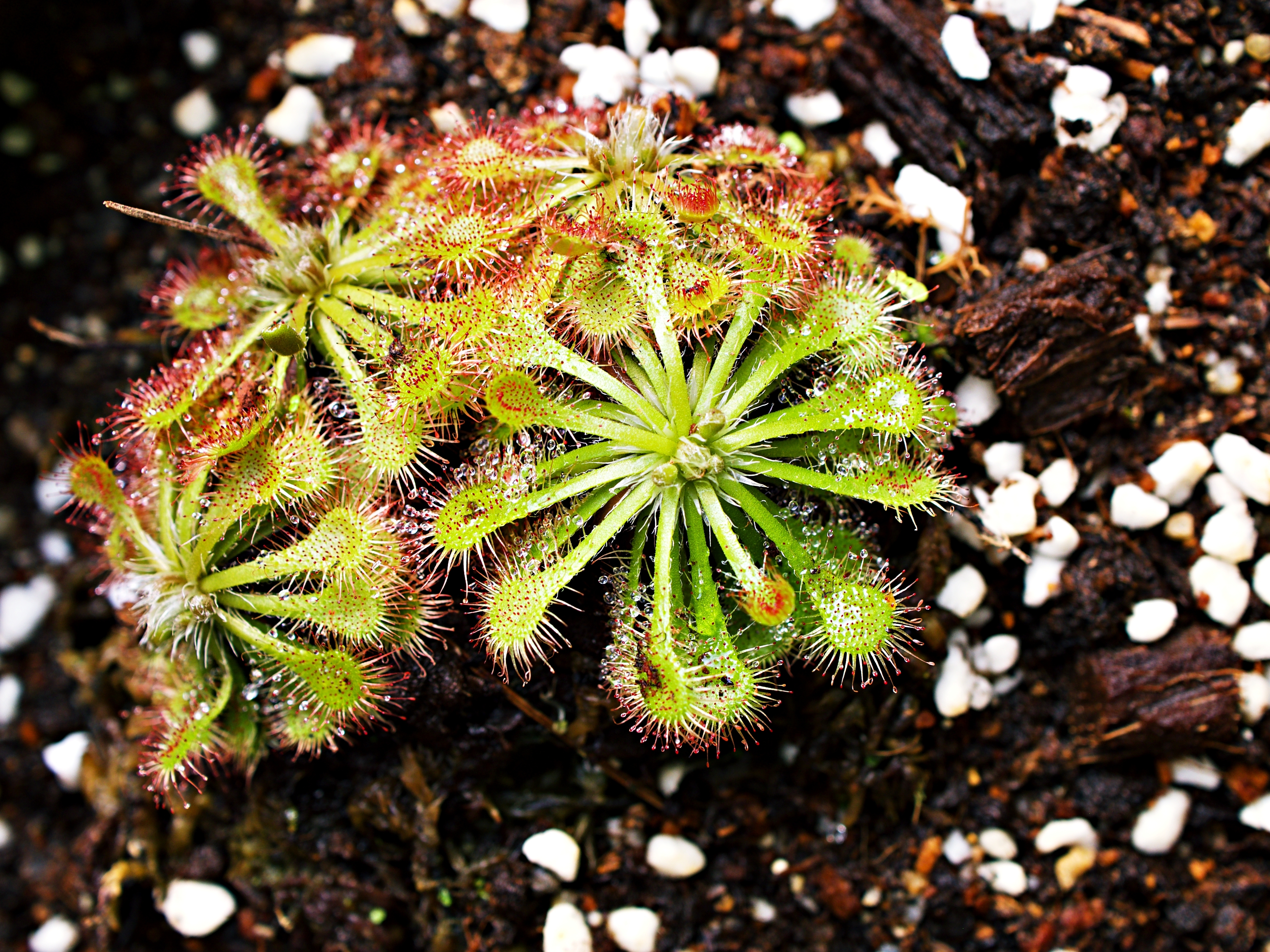
The Sundew, belonging to one of the largest families of carnivorous plants, is a testament to nature's cunning. These pretty carnivorous plants lure their prey with deceptive beauty.
- Appearance: Small, slender plants with rosette-shaped leaves covered in sticky, glandular hairs.
- Prey Capture: Hairs mimic dewdrops to trap insects, leading to their eventual digestion.
- Lifespan: Can live up to 50 years.
- Habitat: Typically found in peat and bog environments.
- Unique Feature: One of the largest families of carnivorous plants with at least 194 species.
- Appeal: Known for their delicate appearance juxtaposed with their deadly nature.
- Conservation Status: Widespread, but certain species may be at risk due to habitat loss.
2. Butterwort (Pinguicula): Nature’s Flypaper
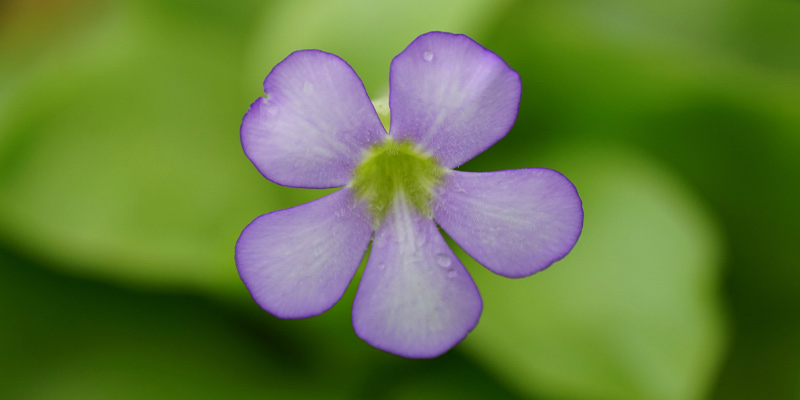
Butterworts are a captivating example of carnivorous plants, combining the allure of their delicate flowers with a deadly mechanism hidden in plain sight.
- Appearance: Characterised by blue, purple, or white flowers and yellow-green, pointed triangular leaves.
- Prey Capture: Sticky fluid on leaves traps and digests insects.
- Lifespan: Varies among species.
- Habitat: Commonly found in alpine and temperate regions.
- Unique Feature: Leaves appear greasy, aiding in trapping insects.
- Appeal: Attractive flowers, often masking their predatory nature.
- Conservation Status: Some species are threatened due to habitat destruction.
3. Cobra Lily (Darlingtonia californica): The Serpentine Trap
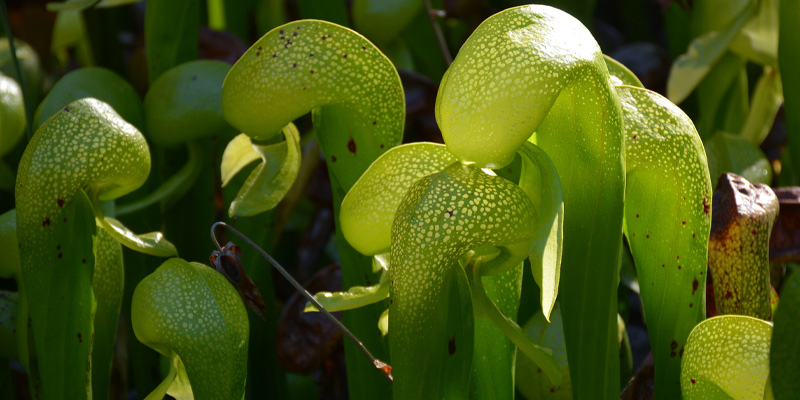
A serpentine carnivorous plant, The Cobra Lily is a remarkable example of evolution, uniquely adapted to its environment.
- Appearance: Curling leaves form a hooded structure resembling a cobra’s head.
- Prey Capture: Nectar and light disorient prey, leading them into a trap.
- Lifespan: Detailed lifespan data varies.
- Habitat: Native to the bogs and cold water soils of California and Oregon.
- Unique Feature: One of the few carnivorous plants with a serpentine appearance.
- Appeal: Known for its striking, unusual shape.
- Conservation Status: Considered rare; specific conservation status varies by region.
4. Monkey Cups (Tropical Pitcher Plants): The Deceptive Goblets
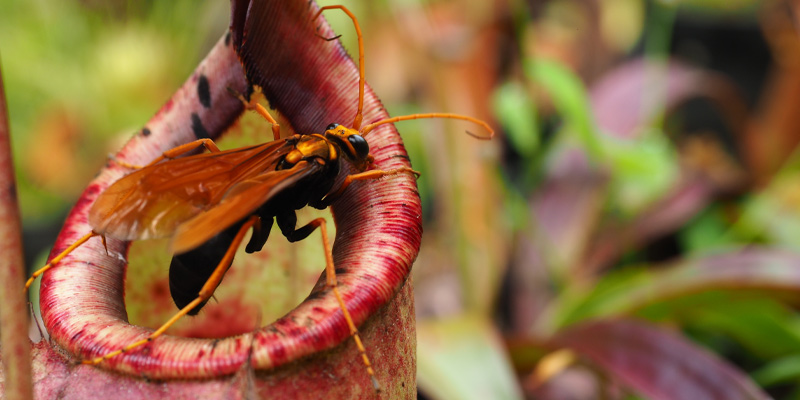
Monkey Cups, or Tropical Pitcher Plants, are a diverse group of tropical carnivorous plants that have evolved fascinating and varied methods to capture and digest their prey.
- Appearance: Vary in size and shape, resembling goblets or pitchers.
- Prey Capture: Pitfall traps filled with nectar drown prey.
- Lifespan: Lifespan details are species-specific.
- Habitat: Found in diverse environments, from tree canopies to ground level.
- Unique Feature: Includes two families – Nepenthaceae and Sarraceniaceae.
- Appeal: Their varied and often large traps are a point of fascination.
- Conservation Status: Varies; some species are at risk due to environmental changes.
5. Venus Flytrap (Dionaea muscipula): The Iconic Snap Trap
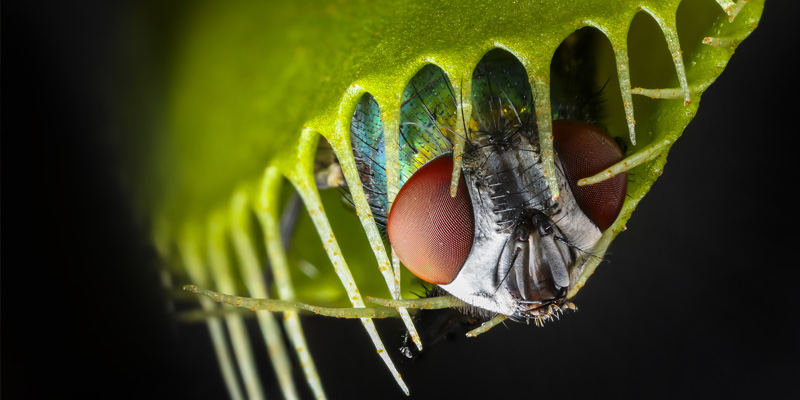
The Venus Flytrap, perhaps the most iconic and infamous of all carnivorous plants, is renowned for its dramatic and efficient trapping mechanism. This mechanism makes the Venus Flytrap the deadliest carnivorous plant.
- Appearance: Small plants with hinged, toothed trapping mechanisms.
- Prey Capture: Uses nectar and triggers hairs to snap shut on insects.
- Lifespan: Typically around 20 years in the wild.
- Habitat: Coastal bogs of North and South Carolina.
- Unique Feature: One of the most widely recognised carnivorous plants.
- Appeal: Popular in culture and known for its rapid trap movement.
- Conservation Status: Rare and endangered in its native habitats.
6. Bladderwort (Utricularia): The Submerged Hunter
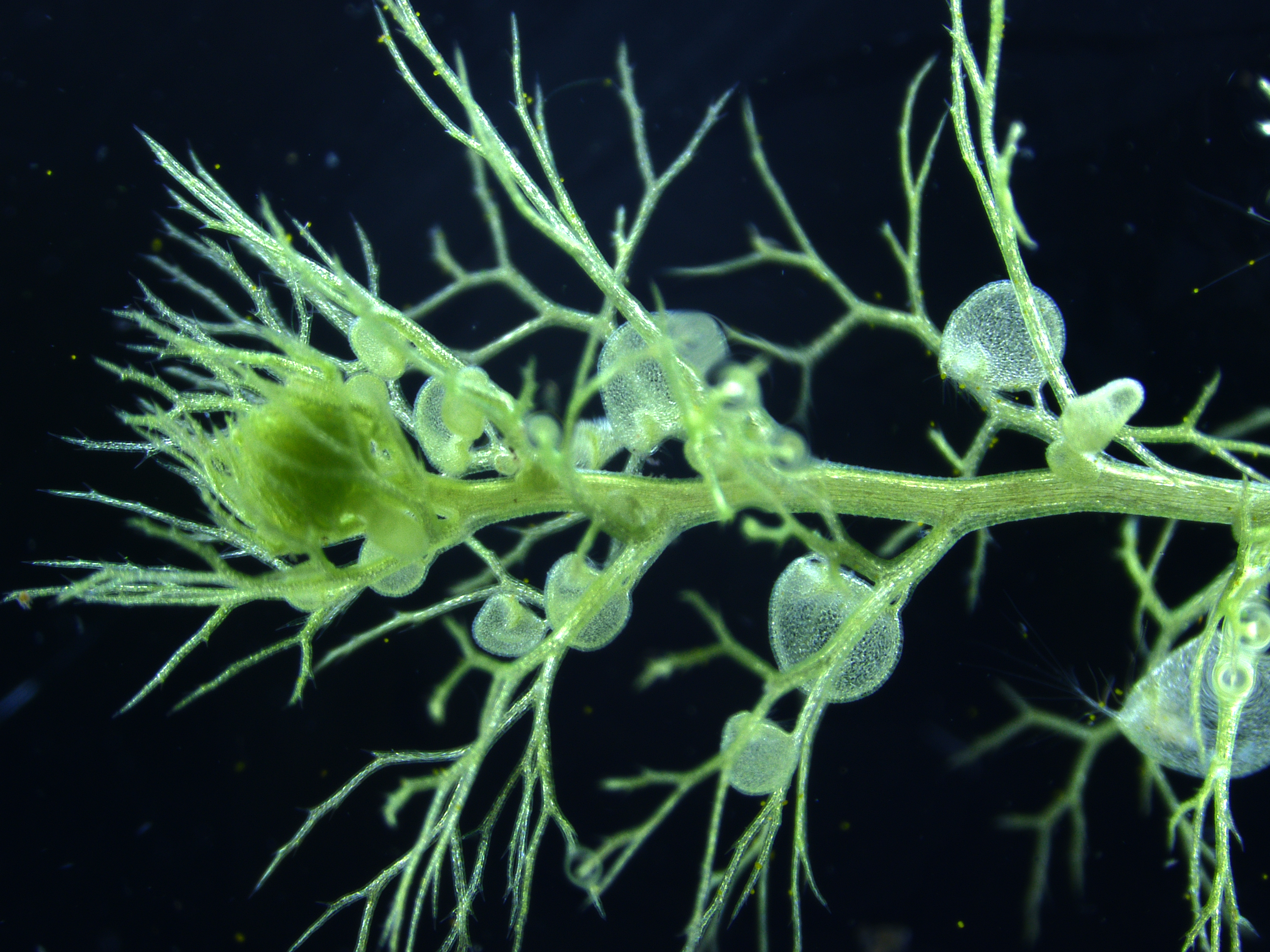
Bladderworts, an aquatic marvel among carnivorous plants, showcase nature’s ingenuity in water-based environments. These fascinating plants trap their prey in a unique underwater setting.
- Appearance: Rootless plants with finely divided, submerged foliage.
- Prey Capture: Small bladder-like structures trap tiny aquatic creatures.
- Lifespan: Typically several years, varying among species.
- Habitat: Found in freshwater and wet soil environments globally.
- Unique Feature: Possesses one of the fastest trapping mechanisms in the plant kingdom.
- Appeal: Their underwater hunting method is a source of intrigue.
- Conservation Status: Many species are common, but some are threatened due to habitat loss.
7. Waterwheel Plant (Aldrovanda vesiculosa): The Floating Snap Trap
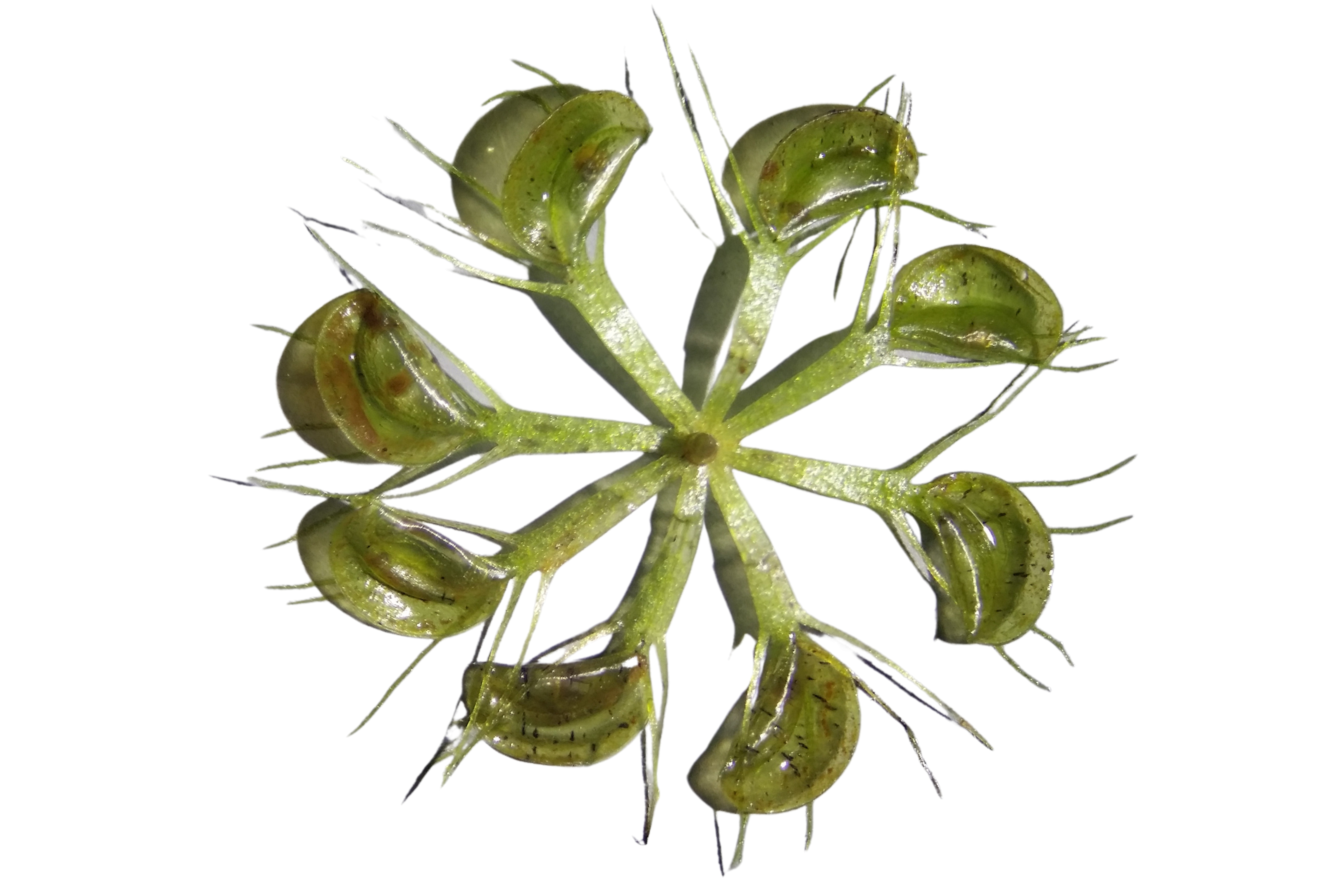
The Waterwheel Plant is an aquatic counterpart to the Venus Flytrap, displaying a similar yet distinct trapping mechanism in watery realms.
- Appearance: Free-floating, rootless plant with whorls of snap-trap leaves.
- Prey Capture: Uses rapid snap-traps to capture aquatic prey.
- Lifespan: Seasonal, with new plants growing from buds each year.
- Habitat: Found in still or slow-moving acidic waters in various continents.
- Unique Feature: One of the few aquatic carnivorous plants with a snap-trap mechanism.
- Appeal: Fascinates with its rapid and efficient underwater trapping.
- Conservation Status: Considered rare and endangered in many of its native habitats.
8. Byblis (Rainbow Plant): The Glistening Lure
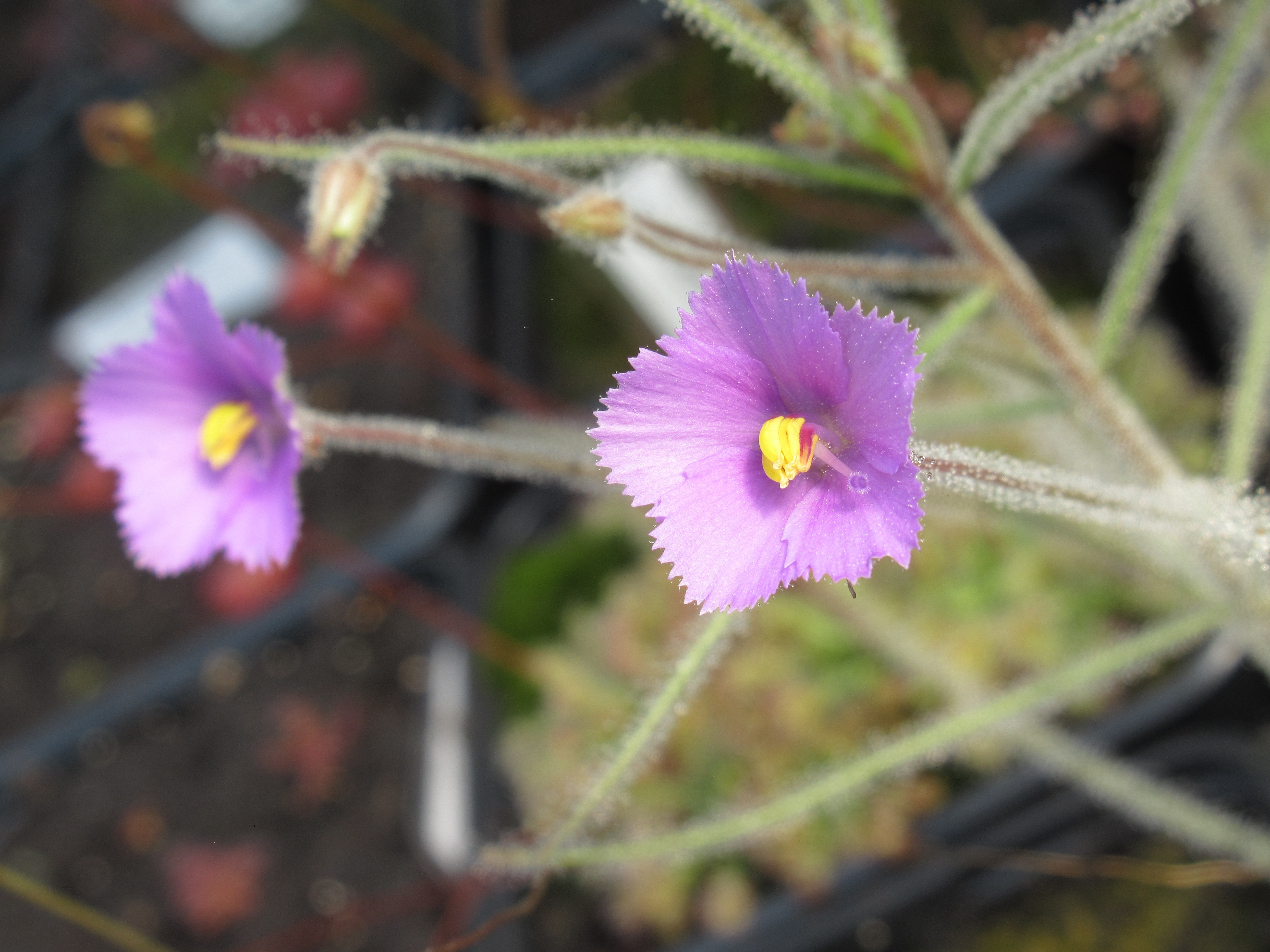
The Rainbow Plant, named for its shimmering, dew-like glands, is a captivating sight, using its radiant appearance to trap prey.
- Appearance: Slender, with elongated leaves covered in sparkling glands.
- Prey Capture: Sticky mucilage on the leaves traps insects, which are digested.
- Lifespan: Annual or perennial, depending on the species.
- Habitat: Typically found in Australian soils with poor nutrient content.
- Unique Feature: Glands produce a glistening effect, resembling a rainbow.
- Appeal: Its sparkling appearance is both beautiful and deadly.
- Conservation Status: Some species are at risk due to limited distribution and habitat loss.
Understanding Carnivorous Plants: Common Queries Answered
This section will address some of the most common queries about these remarkable species, providing insights into their intriguing lives and characteristics.
How Many Species of Carnivorous Plants Are There?
There are approximately 194 known species of carnivorous plants, each adapted to different environments.
What Is the Deadliest Carnivorous Plant?
The Venus Flytrap (Dionaea muscipula) is often regarded as the deadliest carnivorous plant, known for its highly efficient trapping mechanism. This iconic plant captures its prey, primarily insects, using a unique snap-trap method. Two lobes of its leaf form a hinged trap that snaps shut rapidly when triggered by the prey, locking it inside.
The combination of its quick response, reliable trapping strategy, and ability to digest insects effectively makes the Venus Flytrap a remarkable predator in the plant world. This species, native to the coastal bogs of North and South Carolina, is a symbol of deadly allure in the plant kingdom and a subject of fascination due to its unique hunting technique and rapid action.
What Is the Most Common Type of Carnivorous Plant?
The Pitcher Plant, encompassing various species across the Nepenthaceae and Sarraceniaceae families, is widely recognised as the most common type of carnivorous plant. These plants are known for their distinctive pitcher-shaped leaves that form a deep cavity filled with digestive fluid. This ingenious adaptation allows them to trap and digest insects and sometimes even small animals, making them highly effective predators in their natural habitats.
Pitcher Plants are found in diverse environments worldwide, from the tropical jungles of Southeast Asia to the temperate bogs of North America, showcasing their adaptability and widespread presence in the carnivorous plant world. Their varied sizes, striking appearances, and intriguing methods of prey capture contribute to their popularity and commonality among carnivorous plants.
What Is the Easiest Carnivorous Plant to Care for?
Among carnivorous plants, the Venus Flytrap (Dionaea muscipula) is the easiest to care for, making it an ideal choice for beginners. Its care requirements are straightforward: it thrives in bright, indirect sunlight, requires nutrient-poor, acidic soil, and prefers rainwater or distilled water.
The Venus Flytrap's adaptability to indoor environments and its fascinating feeding mechanism make it captivating to observe and manageable to maintain. It thrives with basic care while showcasing the unique characteristics of carnivorous plants.
Recommended for you!
Best SellersCaring for Carnivorous Plants: A Beginner’s Guide
Caring for a carnivorous plant is a rewarding and educational experience, especially for those new to gardening with these unique species. While each plant requires different care tailored to its needs, here are some key points to ensure your carnivorous plant thrives:
- Provide Plenty of Sunlight: Ensure it gets bright, indirect sunlight for healthy growth.
- Use Nutrient-Poor, Acidic Soil: Mimic its natural habitat for optimal health.
- Water with Distilled or Rainwater: Avoid tap water, as minerals can harm the plant.
- Avoid Overfeeding: Carnivorous plants need only occasional feeding.
- Maintain Humidity: These plants often thrive in more humid environments.
- Be Patient During Dormancy: Many species have a dormant period in colder months.
- Avoid Fertilizers and Chemicals: These can be damaging to carnivorous plants.
By following these guidelines, you can enjoy the fascinating world of carnivorous plants and ensure their health and longevity in your care.
Carnivorous Plants and Conservation
Many carnivorous plants are threatened by habitat destruction and climate change. The Venus Flytrap, for example, is facing challenges due to habitat loss. Conservation efforts are vital to protect these unique species and their habitats.
Nurture Your Green Thumb with Centre of Excellence
Interested in delving deeper into the fascinating world of plants? Our Botany Diploma Course at Centre of Excellence offers comprehensive insights into plant biology, ecology, and conservation.
Follow the link to start your learning journey today at the special price of only £29.













